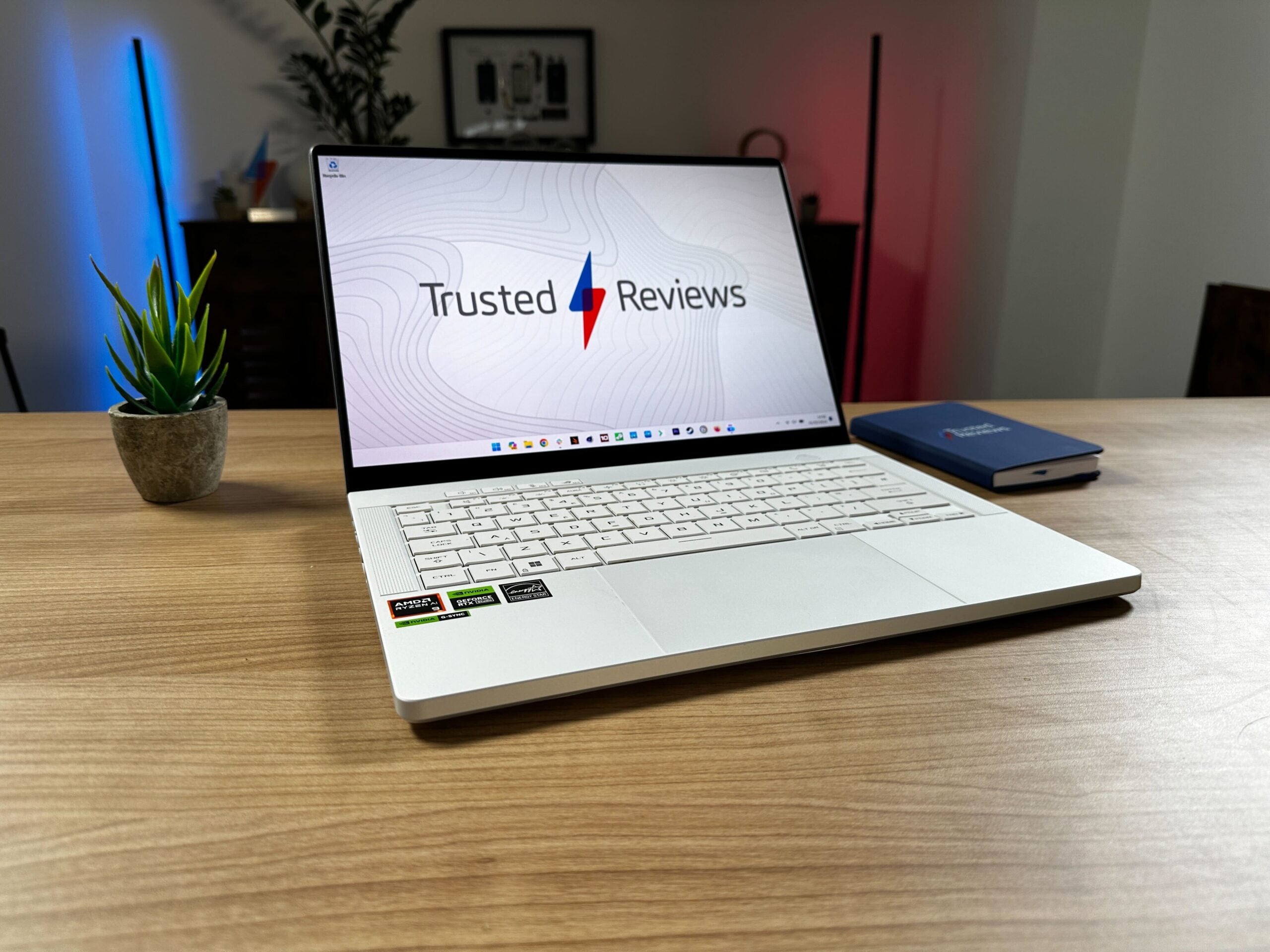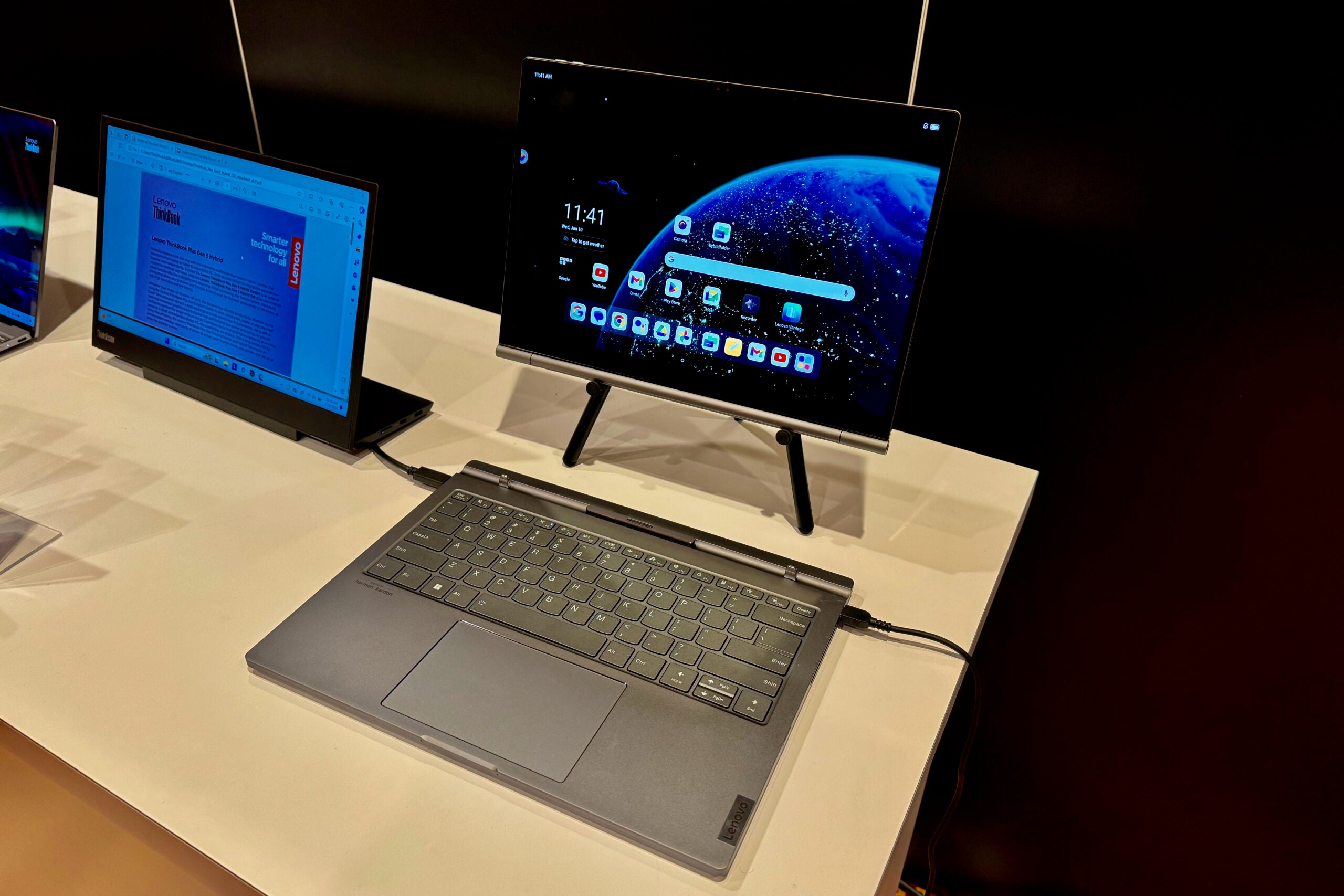First Impressions: LG OLED65G4
A preview of LG's premium OLED for 2024


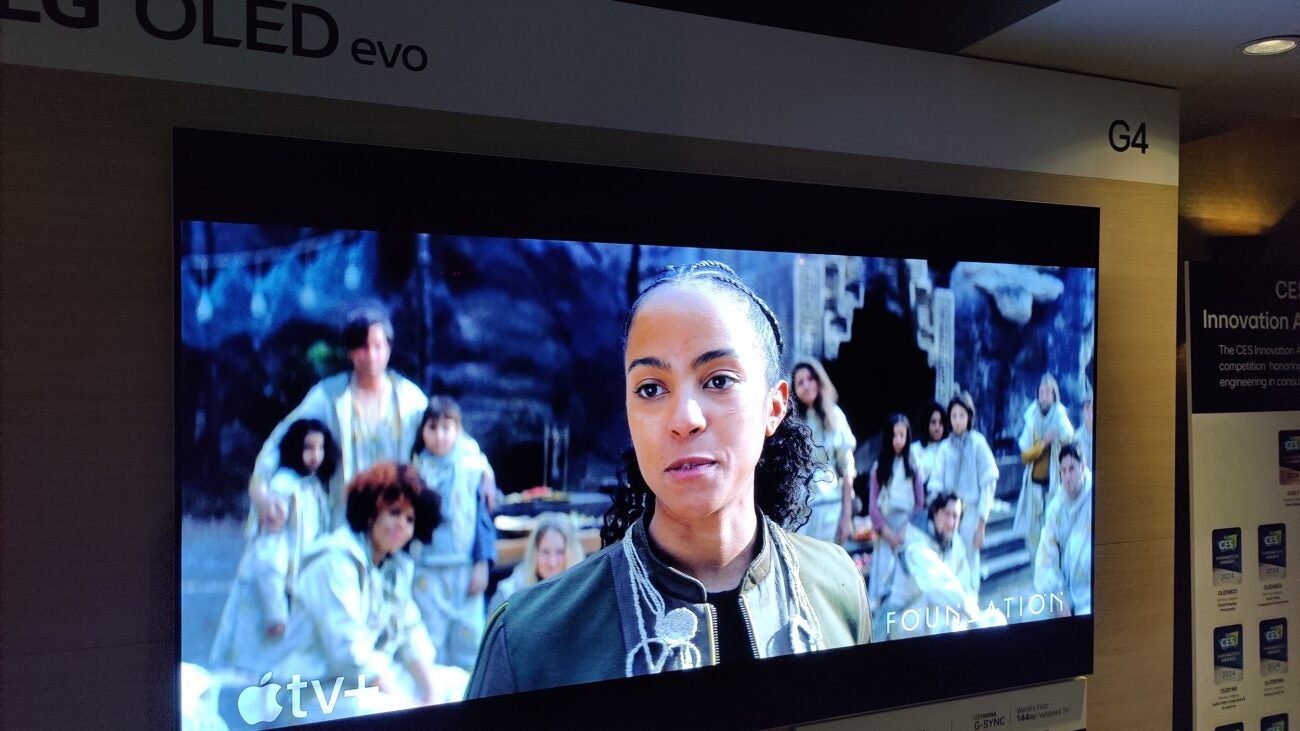

First Impressions
Improvements to the picture performance should maintain the G4 OLED’s status one of the highest-performing OLED TVs, and its new stand could possibly make it a more accessible option in terms of placing it in a room.
Key Features
- Zero Gap DesignIntended to be wall-mounted
- Audio11.1.2 virtual channels of sound
- α (Alpha) 11 AI processorUses A.I. to improve picture and sound
Introduction
At CES 2024, LG unveiled the latest models in its premium TV line-up, ranging from the M4, G4, and C4 OLEDs.
I was there for a brief peek and if you’re expecting revolution, you may feel a little disappointed. Evolution is what LG is going for and with the G4 series in particular, you should expect a similar brightness-busting HDR performance, with a few more enhancements.
Design
- New stand in select countries
There seems to be no change in terms of design with regard to the G4 OLED. It remains a TV primarily designed to be heaved onto a wall, although LG is providing a little more flexibility for those who want the G4 but are put off by that aspect of the design.

In certain markets, customers will get the option of a stand with the G4. It’s a nice-looking stand too, with a wide, central plinth, and during assembly you’re presented with two options. You can either have the TV slung low to whatever surface it’s planted on, or you can raise it up to accommodate a soundbar. You’ll be locked into this position once the TV is set up – there are no take backs unless you reassemble the stand.
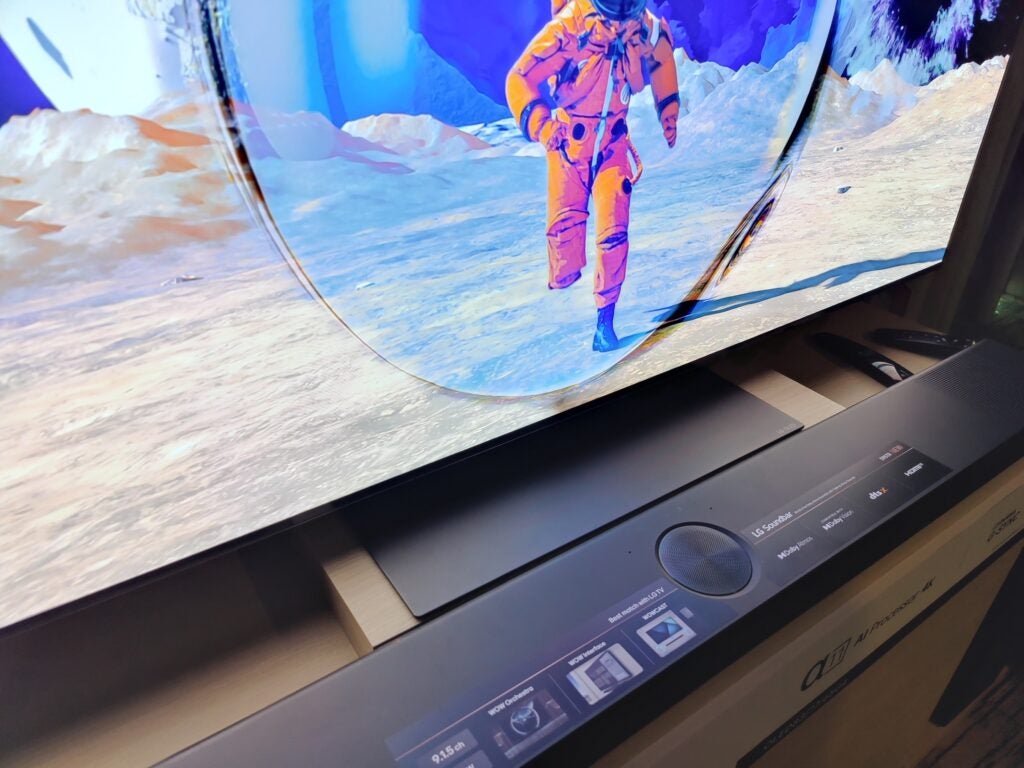
The caveat is that this hasn’t yet been announced for all markets yet. The US and Korea will get it, but there remains a question mark over whether UK buyers will get this option.
Features
- Refresh rate support up to 144Hz
- Dolby Vision x Filmmaker mode
Most of what was on the OLED65G3 is carried over the OLED65G4 models. LG’s Light Control Architecture + Light Boosting Algorithm + Brightness Booster Max (or MLA to give it a much more manageable name) will be available on all the models up to the 83-inch model (the 83-inch missed out in 2023).
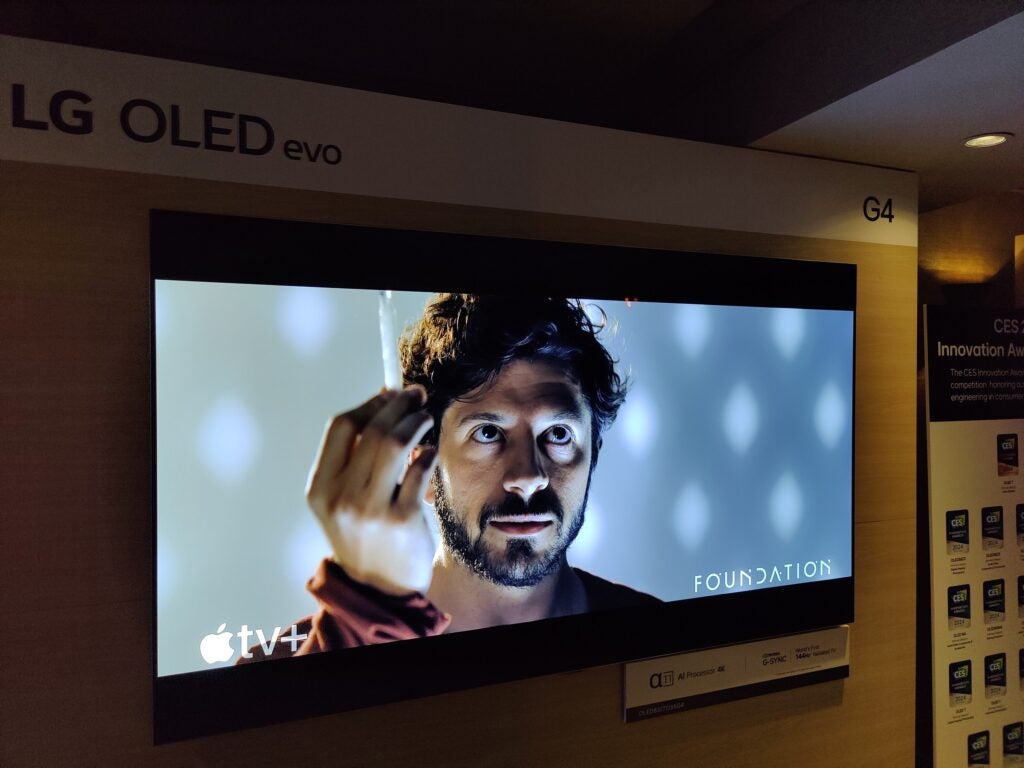
It won’t feature on the 97-inch model. The thinking that was relayed to me was that a 97-inch screen tends to be bought and used in dark theatre-like rooms, and therefore requires less need for MLA.
It should also be noted that the MLA that features in LG’s OLEDs differs from what’s offered in other sets, namely that the light boosting, and brightness booster max technology employed is LG’s own creation, and not available on rivals’ MLA screens.
The Brightness Booster Max will also be able to render highlights (the brightest parts of the image) up to 150% brighter, so you get more intense images full of contrast.
What else? The G4 can hit refresh rates up to 144Hz for PC gaming, and this is certified by Nvidia, so there shouldn’t be any issues gaming at 144Hz with G-Sync. Out of the box though, the G4 hits 120Hz, so the 144Hz feature will have to be switched on the settings for those that want it.
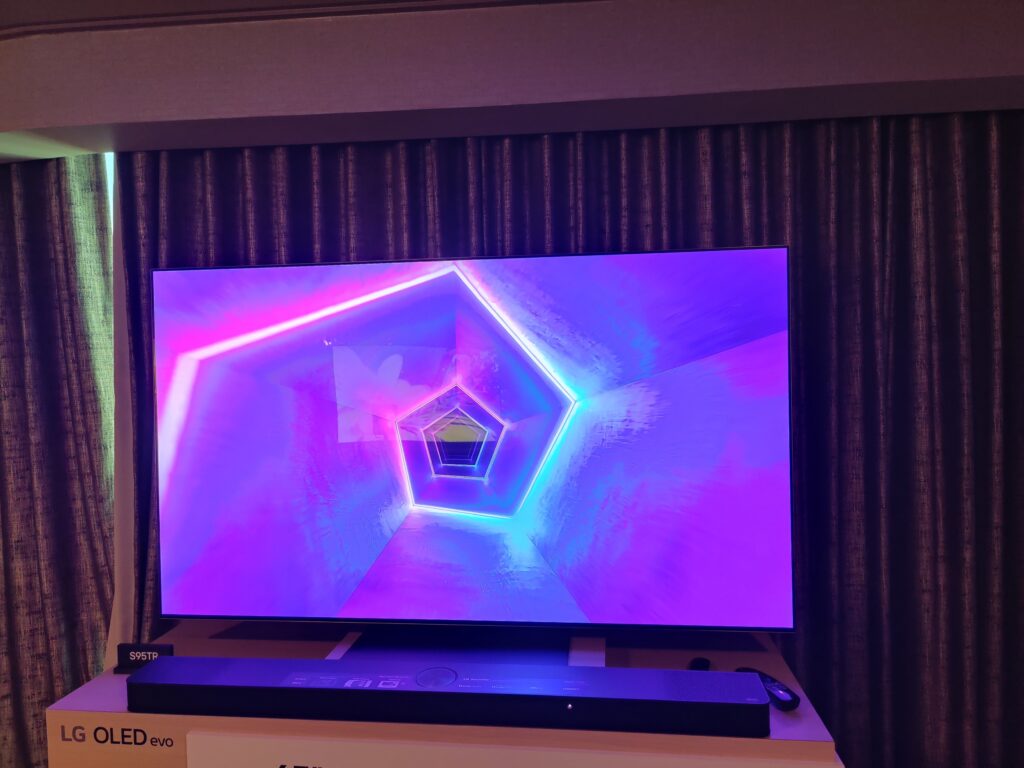
The LG G4 supports HDR10, HLG, and Dolby Vision when it comes to HDR formats, and they’ll be a slight change in how the TV handles Dolby Vision with Filmmaker mode. This year, you’ll be able to watch Dolby Vision content in Filmmaker mode and still get the benefits of Dolby’s HDR processing.
Essentially, if you’re watching a title in Filmmaker mode, and you switch to a Dolby Vision title, the G4 will stay in Filmmaker but Dolby’s processing will be implemented in that mode. LG are coming to the market first with this feature.
Picture Quality
- Improved brightness
- New Alpha 11 processor
- AI picture features
The G4 (and the M4’s) picture is powered by the brand new α (Alpha) 11 AI processor, which for 2024 is so powerful that it can do its processing above the DRM used by the likes of Netflix and Disney+, applying LG’s picture processing abilities in its AI Picture Pro mode.
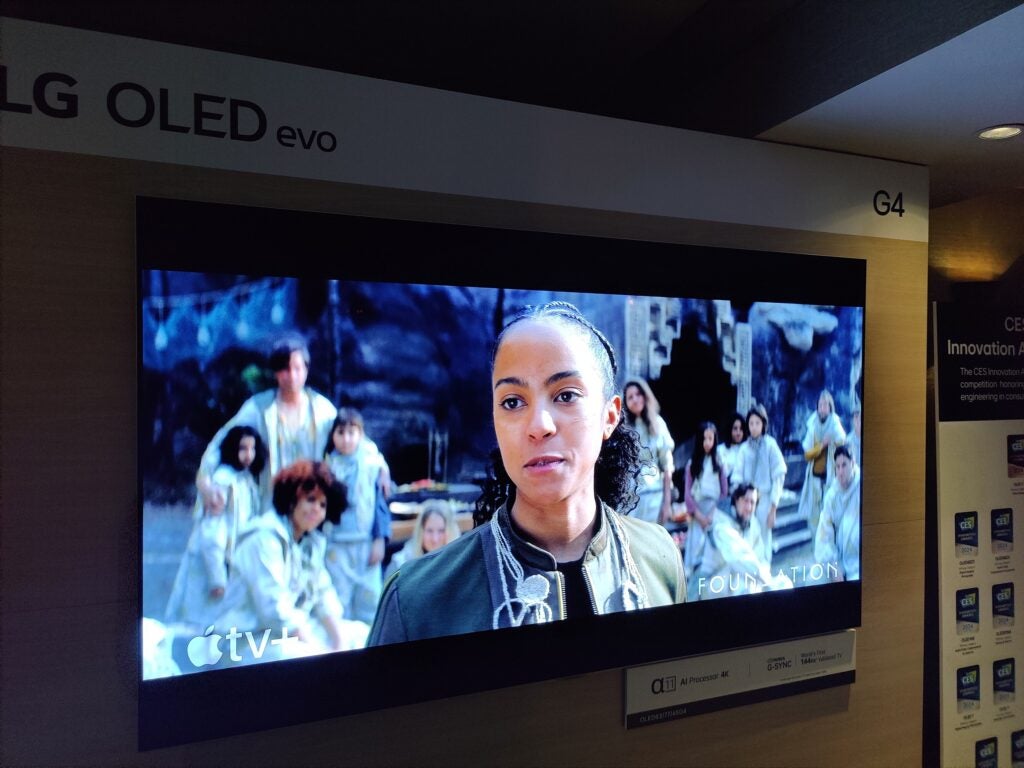
What’s new for the α (Alpha) 11 AI processor is Object Enhancing and AI Director Processing features. The former will analyse each pixel, sharpen it and give more depth to an image, while the latter claims to understand the use of colours within a film and be able to enhance it while keeping with the filmmaker’s intentions.
LG were rather cagey on how bright the TV can hit – that’s something I’ll have to find out for myself when the TV launches later in the year – so I can’t comment on the reports from LG Display (and other outlets) that the G4 will be able to hit 3000 nits.
Sound Quality
- Upgraded Atmos performance
- Voice Remastered feature
What about the audio? I didn’t hear the G4’s speakers so again can’t comment on the performance. I can expand on the TV’s audio features, though.
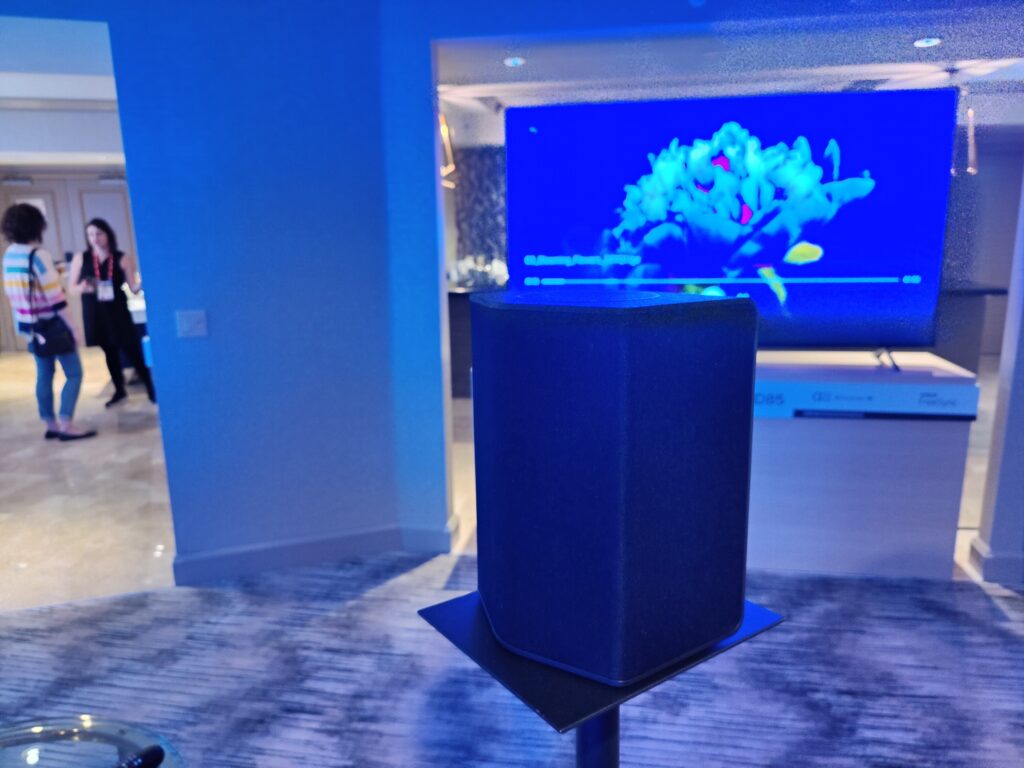
The α11 AI processor can create an 11.1.2 channel sound with two more virtual side speakers than the G3 featured. The Dynamic Sound Booster can increase the power and clarity of sound, while the Voice Remastered can extract dialogue from a scene, clean it up and put it back into scene, so to speak, for a clearer performance.
Let’s hope this all adds up to a better performance than the OLED65G3. The weakest part of the G3’s performance was its sound, otherwise you may want to consider the S95TR soundbar (rear speakers pictured) that’s coming this year.
First impressions
There’s not much to go on in terms of actual performance. It’s much too early for that, but the G4’s new tweaks should elicit brighter, more natural picture performance; better sound (hopefully) from its speakers, and improved PC gaming.
Those in certain territories will also benefit from the new stand, which should hopefully make the G4 more accessible to anyone interested in buying it.

